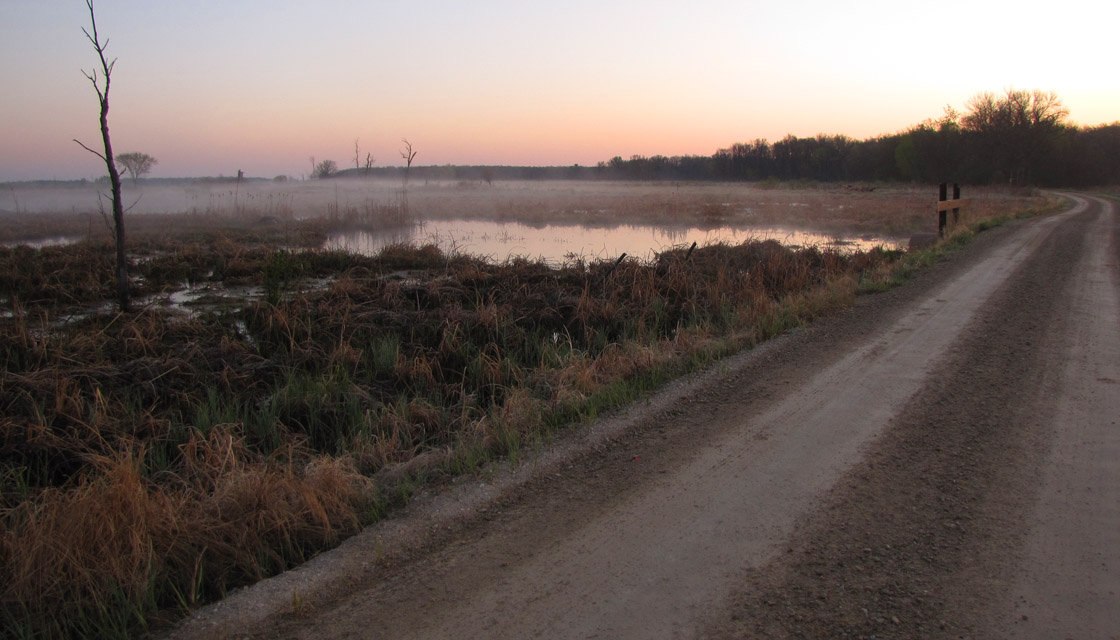Hotspot of the month -- White River Marsh State Wildlife Area

We have decided to bring the hotspot feature back to the WI eBird page, and it’s better than ever! Every month we will feature a different hotspot that we feel eBirders should check out if they are in the area. A random county will be drawn and a hotspot within the county will be featured. The first county is Green Lake County in the central part of the state. We recruited local eBirder Tom Schultz who shares his wealth of knowledge of the area below.
This large, state-owned public hunting area is located in the northwestern part of Green Lake County a few miles north of Princeton along Highway D. It is roughly 12,000 acres in size, and consists of a rich mosaic of lowland forest, wet meadow and prairie, brushy thickets, and agricultural fields. The area is crossed by several streams, including the White River and Sucker Creek, which in turn flow into the Fox River along the southern boundary. The diversity of habitats here attracts a good variety of birdlife, with nearly 200 species recorded. A careful observer might locate over 100 in a few hours on an early morning in mid-May.
One of the most characteristic birds to be found here is the Sandhill Crane, which is present in large numbers from early spring through fall. The concentrations from late September into early November are often spectacular. Very exciting, beginning in 2011, is the start of a release and flight-training program for 10 young Whooping Cranes at White River Marsh. These birds will be “migrated” to Florida this fall, being led by an ultralight aircraft. It is hoped that these whoopers will return to eventually establish a breeding population in this prime crane country.
Several state-listed “threatened” species can also be found annually at White River Marsh, including Acadian Flycatcher, Cerulean Warbler and Henslow’s Sparrow. Other birds of interest that are regular breeders here include Least and American Bitterns, both cuckoos, Pileated Woodpecker, Willow and Alder Flycatchers, and Black-and-white Warbler. A few Prothonotary Warblers have been found nesting along the Fox River, and a White-eyed Vireo summered this year.

There are two main access roads that transect the area: County Hwy. D and White River Road, which is a state-designated Rustic Road. The White River Road is better suited for wildlife viewing, since much of it is unpaved, and therefore less traveled. Much of this road is unplowed in winter and may be impassable. It can be found by taking D south from its intersection with Hwy. DD about 2.5 miles and then turning east. This same point can also be found 2.5 miles north of Princeton. The first two miles of White River Road are paved, but the remainder is gravel. It crosses through all of the typical habitats of the area, providing a good cross-section of the vegetation and terrain. Migration times can be especially good, with thrushes, warblers, kinglets, etc. sometimes in abundance. One of the best areas for breeding woodland species is located at about 2.5 miles. The mature, lowland oak forest in this area has a number of interesting breeding species, such as Acadian and Least Flycatchers, Scarlet Tanagers, Yellow-throated Vireo, Cerulean Warbler, American Redstart and other forest birds. Another good area is where the bridge over the White River is crossed.

A half mile or so beyond the river one will reach an extensive wet thicket of willow and dogwood, which in summer hosts Willow Flycatcher, Swamp Sparrow, and other wetlands birds. Yellow Rails have been found on a few occasions in late April or May. At the next small bridge (actually a culvert, 4.4 miles from the west end of White River Road), check the cattail habitat for Green Heron, Least and American Bitterns, Sora and Virginia Rails, and Sedge and Marsh Wrens. Northern Harriers also nest in various places in the marsh, and American Woodcock and Wilson’s Snipe can be observed doing their distinctive courtship flight displays.

Highway D is the other main route across the area and can also be quite good, especially for grassland species like Sedge Wren, Henslow’s Sparrow and Bobolink. The most interesting section along Hwy. D for the birder might be the mature lowland forest in the vicinity of the White River. Besides being good for migrants, check the lowland forest upstream and downstream from the bridge for such interesting breeders as Acadian and Least Flycatchers, Blue-gray Gnatcatcher, Scarlet Tanager, Yellow-throated Vireo, Cerulean Warbler and American Redstart.
There are several grasslands and prairie restorations in the northern portion of White River Marsh. Look for Grasshopper and Henslow’s Sparrows, Eastern Meadowlarks and Bobolinks, all of which nest here annually. LeConte’s Sparrow has also been found here on several occasions in the summer, and these grasslands may host several Short-eared Owls in the winter. Take Marsh Road north from Hwy. D, and then follow South Road to the east or the west.
Fun facts:
Species recorded on eBird: 184
Checklists submitted: 76
Rare species recorded: Yellow Rail, King Rail, White-eyed Vireo
Bar graph of species occurrence
You may notice that there is no data on the bar graph for late summer, fall, and most of winter for White River. So, this is a perfect time to check out this birding gem and contribute to the data!
Special thanks to Tom Schultz for writing the article and providing habitat pictures!

